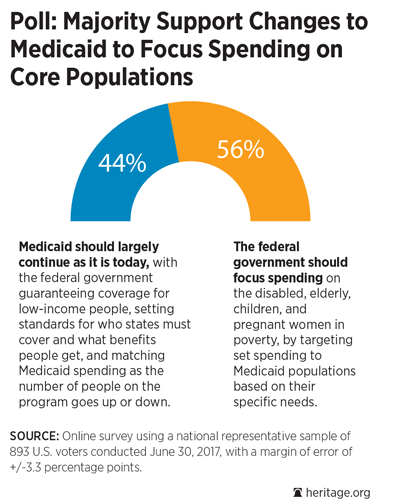Medicaid Primer
- Medicaid is a more than 50-year-old welfare program that provides free health care for certain vulnerable, low-income populations.
- Mounting fiscal, demographic, and structural challenges increasingly strain this jointly funded federal–state program.
- Total federal and state spending on Medicaid was $552.3 billion in 2015 and is expected to increase over 73 percent over the next decade reaching $957.5 billion by 2025.
Obamacare Impact
- Obamacare poured millions of Americans into Medicaid instead of mainstream private insurance.
- In fact, of the 15.7 million who gained coverage over 2014 to 2015, 14 million was the result of increased Medicaid enrollment.
- By changing the formula reimbursement, Obamacare incentivized the addition of able bodied adults to the Medicare rolls
- Eighty-three percent of the increase in Medicaid enrollment during 2014–2016 occurred in states that adopted the Obamacare expansion of able-bodied adults. Over the 3-year period (2014, 2015, and 2016), Medicaid grew 14 million; of that, 11.7 million (83 percent of total growth) occurred in states who expanded Medicaid to able-bodied adults.
- The increased funding to this group means there is less money available for the original beneficiaries of Medicaid—elderly disabled, pregnant women, and children in poverty.

Medicaid Reform—Per Capita Caps
- Both the House bill (AHCA) and the Senate bill (BCRA) return the focus of Medicaid to its traditional recipients—elderly, disabled, children, and pregnant women in poverty.
- It would be the greatest entitlement reform in a generation.
- The bill also helps to remove low-income able-bodied adults from the Medicaid rolls by providing them access to mainstream private insurance through tax credits.
- Access to private insurance coverage would improve continuity of coverage and access to higher quality care.



